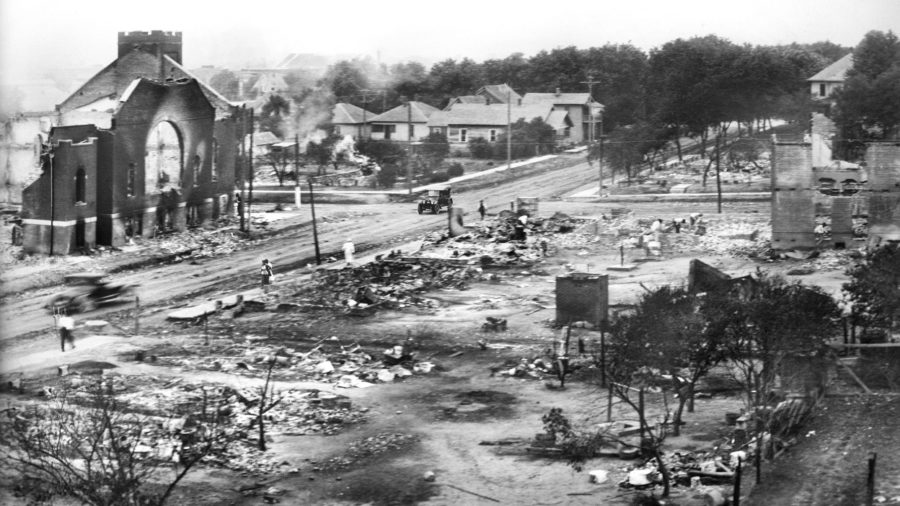The Tulsa Massacre: One Hundred Years in Retrospect
March 2, 2022
Historically, people of color have been kept down by systems that govern our nation. Here in the U.S. the national economy was once supplemented by the institution of slavery, in which black people were bought and sold as property, treated as animals that were uncivilized and exploitable, and then forced to labor in plantations under harsh conditions. They were not paid, they were the subjects of an age old injustice, and this continued for generations, damaging their legacy in the process. Once the irradication of the institution of slavery had occured in the U.S., black Americans were freed in a sense, but somewhere closer to the bare minimum of freedom than equal to white Americans: they were free of forced labor, but they were hardly closer to equality than they were before. Those systems of oppression persisted further, equality had not been achieved, would not be achieved for some time, and even now, some argue that equality has yet to be achieved and that those aforementioned systems, considered relics of past folly, still exist today.
Fifty-six years after slavery was abolished, a flourishing black commuinity in Tulsa, Oklahoma would be devested by a dark force of nature, brought to fruition by an animalistic aspect of the human condition that was not previously unknown to them: violence.
The Greenwood District was known as “Black Wall Street” in the early 20th century, a place in which its residents had seen unprecedented prosperity, especially for a black community. For black Americans, Greenwood was a safe-haven for their presence and culture to breathe freely, and by extension, their economic and social growth even more so. Unfortunately, this community’s phenomenal prosperity would be the target of pivotal, radical, racially motivated violence that destroyed not only such a prosperous district, but manipulated the morale of the black man.
On the latter half of the final day of May, 1921, a 19-year-old black man named Dick Rowland was arrested based on the accusation that he had assaulted a 17-year-old, white female named Sarah Page. The rumors spread and, without trial, it was suspected that Rowland would be lynched. An irate mob of white Tulsans formed about the jailhouse, their intentions unclear and entirely possible. In response to this mass, enumerated at hundreds, both reddened and pale-faced, a group of armed black individuals showed to prevent the possibilty of Rowland being lynched. As tensions grew, the deafening loudness of yells and demands was silenced by gunfire, and subsequently the deafening nature of it all grew. By the end of this first altercation, 12 men had died: 10 white and 2 black. The attempt at defense of one group led to the overt and out of control offense of the other.
Word of this struggle spread rather quickly, and the damage that would ensue would be irreparable. An explosive response by the white Tulsans was prolonged swiftly throughout the night and into the morning. They plunged into Greenwood, pillaging and plucking the fruits the district offered, pouncing on any black citizen out in the open, injuring and murdering with all their might. That long, black night in Tulsa endured until the National Guard declared martial law and ended any extension of damage the massacre might have managed.
The final result of the massacre left thousands homeless, thousands more were hospitalized, the loss of property was tens of millions of dollars, and many lay deceased, white and black alike. In the end, 39 people died, 26 black and 13 white, although some scholars have made estimations of dozens more. In the wake of radical racism, Greenwood was left in ruin and the residents who once filled the streets were left nothing but despair.
For decades after the fact, the event was kept quiet and many Tulsans opted to attempt to forget about the event and the losses that came with it. Nearly one-hundred-one years later, the Tulsa Massacre still echoes now, and is often referred to in contemporary discussion of race relations as a consequence of racism and bigotry. The massacre that took place on that summer night in Tulsa is retold to and studied by the generations of Americans that succeeded it, but what can never be understood, taught, nor studied is the devastating condition the surviving victims experienced. It was, no doubt, a dark day for the black community, and an uncanny representation of what hatred can breed.



